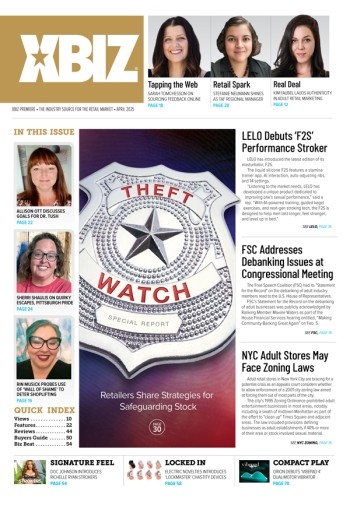Color contributes immeasurable beauty to the world around us. We are all very familiar with its different shades and tones, with the emotions that various colors inspire within us, with our favorite color amongst thousands, yet it is extremely difficult to define a color scheme that is considered to be "trendy" or "professional."
Why is this? Not only is it difficult to label color schemes due to the wealth of associations tied to each individual color, it is difficult to attach implications to a color scheme because the associations that people make concerning colors vary throughout different regions of the world. Because color is not a universal language, the color scheme of a Website is a very important factor to consider. Not only will the colors chosen function to create an environment that will represent your company and its products and services, they will also assist in expressing your Website's values and goals to the world. Ensuring that the color scheme on your Website is appropriate, based upon the site's content and the type of audience for whom the site is intended, is essential.
People relate especially well to symbolism through the use of color. In the real world, colors are manipulated in order to inspire various emotions. Red and white are commonly included in color schemes at restaurants, for example, because red inspires hunger and white inspires cleanliness1. Believe it or not, people respond to online color schemes in a similar fashion. Colors, in addition to other visual stimulus, prompt psychological responses from people.
Following is a breakdown of emotions and qualities that are commonly associated with colors:
Black: Mystery, power, sophistication, formality, elegance, fear, anonymity, evil, loss, sadness, underground, depth, style.
Brown: Balance, concentration, earthiness, indecision, stability, hearth, home, comfort, endurance, simplicity.
Blue: Peace, calming, harmony, health, wisdom, kindness, sincerity, fidelity, immortality, unity, trust, truth, order, loyalty, sky, water.
Green: Nature, healing, life, money, abundance, stability, fertility, luck, wealth, toxicity, renewal, youth, vigor, generosity, jealousy, envy.
Red: Love, energy, excitement, passion, intensity, heat, desire, speed, courage, strength, sex, magnetism, will, aggression, anger, war, blood, warning, .
Pink: Affection, honor, unselfishness, femininity, timidness.
Orange: Optimism, receptivity, informality, friendship, attraction, self-control, energy, balance, warmth, enthusiasm, intellect, demand.
Yellow: Success, inspiration, creativity, sunshine, happiness, joy, optimism, idealism, philosophy, dishonesty, cowardice, jealousy, deceit, illness, hazard.
Purple: Fantasy, power, progress, ambition, idealism, protection, independence, impulsiveness, royalty, spirituality, ceremony, wisdom, arrogance, mourning.
White: Peace, tranquility, cleansing, purity, reverence, humility, marriage, precision, innocence, youth, truth, simplicity, spirituality, protection.
Emotional responses to color are well documented and should be taken very seriously. This is why differing cultural perspectives regarding colors are a critical consideration when choosing a color scheme targeting an international audience. Cultures that associate inappropriate emotions with your color scheme will perceive your Website in a negative way. A majority of web designers have become accustomed to a single culture; the way that each of us perceives the world is shaped due to the community that surrounds us most often. Color associations are developed based upon the culture in which we live. Developers often neglect to consider the implications of different colors in unfamiliar cultures and consider implications common only to their own culture. This consideration is especially crucial when designing for a global audience. Eastern cultures represent mourning with the color white, for example, whereas Western cultures represent mourning by use of the color black. Supposing you were designing an international Website for the wedding or funeral industry, it would be very appropriate to be aware of the cultural significance of these two colors.
Following is a list of colors coupled with descriptions of their varying cultural significance2:
Red
China - symbol of celebration and luck, used in many cultural ceremonies that range from funerals to weddings.
India - color of purity (used in wedding outfits).
Western cultures - Christmas color when combined with green; Valentines Day when combined with pink; indicates stop (danger) at traffic lights.
Eastern cultures - signifies joy when combined with white.
Yellow
Asia - sacred, imperial.
Western cultures - joy, happiness.
Blue
China - associated with immortality.
Colombia - associated with soap.
Hindus - the color of Krishna.
Jews - holiness.
Middle East - protective color.
* Often considered to be the safest global color.
Orange
Ireland - religious significance (Protestant).
Western cultures - inexpensive goods, Halloween (with black).
Green 2
China - studies indicate this is not a good color choice for packaging, green hats mean a man's wife is cheating on him.
France - studies indicate this is not a good color choice for packaging.
India - the color of Islam.
Ireland - religious significance (Catholic).
Some tropical countries - associated with danger
Western cultures - indicates go (safe) at traffic lights, environmental awareness, St. Patrick's Day, Christmas color (red and green).
Purple
Western cultures - royalty.
Gray
Western cultures - loneliness, lifeless and loveless times or settings.
Brown
Colombia - discourages sales.
India - the color of mourning.
White
Eastern cultures - mourning, death.
Japan - white carnations signify death.
Western cultures - purity (used in weddings).
Black
Western cultures - mourning, death.
Saffron
Hindu - sacred color.
Pastels
Korea - trust.
Western cultures - spring, Easter; pale blue (baby blue) stands for an infant boy; pale pink stands for an infant girl.
Rainbow
Western cultures - Gay pride; Christianity; cultural unity.
Realizing the significance of your chosen color scheme will ensure that it is assisting the design of your Website in sending your audience the intended message. Additionally, a good color scheme should enhance the content of you site by indicating navigation, related content, and relationships amongst the information being displayed. For example, a word displayed in red is naturally assumed to be of higher importance than a word that is displayed in blue. Red, black, and white are all powerful colors to be used when sending a message. White is the brightest color and black is the most powerful contrast to white, while the color red effectively emphasizes important points and looks good in combination with both black and white. Whichever color scheme you decide to use, limit the amount of colors involved and be sure to include the color white. White functions to balance the colors on your page and by leaving white space between objects on your page you will be making it much easier on the eyes of your guests. Additionally, limiting the number of colors used will reduce the size of your image files. The smaller your file sizes, the faster they will load and the more readable and inviting they will appear to impatient visitors.3 People all over the globe respond similarly to a well organized Website.
Colors should be utilized to emphasize different objects on a Webpage as well. People all over the globe will respond similarly to a well organized Website. By using a light blue or gray background on a Website, you will call attention to the more brightly colored features and images on the page. These calming colors typically contribute to a very relaxed atmosphere as well. Similarly, if you were to use a bright orange background and green text on a page full of images, you run the risk of creating a very busy visual environment in which bright color combinations compete heavily for the attention of your audience. It is often tempting to pack a page full of stimulating colors and pictures, however, you must remember that a visitor who can easily find what he or she is looking for will be much happier than a visitor who thinks your site is really pretty but can't find what she needs. Don't let the colors chosen interfere with the information that you are attempting to portray.
A final note: your Website is a tool for sending a message to your visitors, so be sure the cultural connotations of color match the message you wish to communicate.
1 https://www.colormatters.com/culturematters.html
2 https://webdesign.about.com/library/weekly/aa070400c.htm
3 https://www.coolhomepages.com/cda/color/
Amanda Grimm has worked in the adult industry for three years. She specializes in international Web design and usability testing. Amanda holds a BS in Business Information Systems, and can be reached at Amanda@AdultWebmasterConsultants.com and https://www.adultwebmasterconsultants.com/





